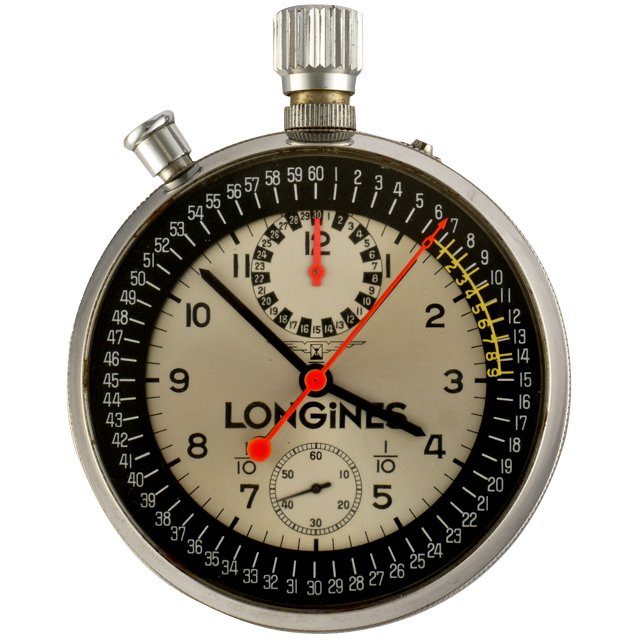
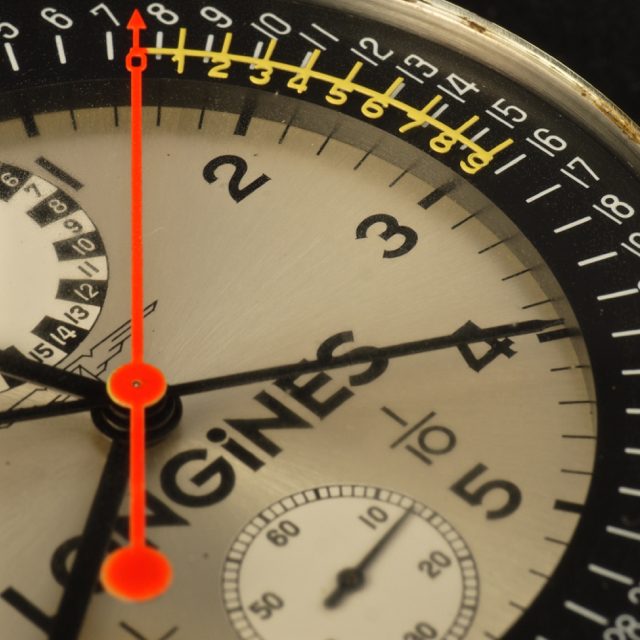
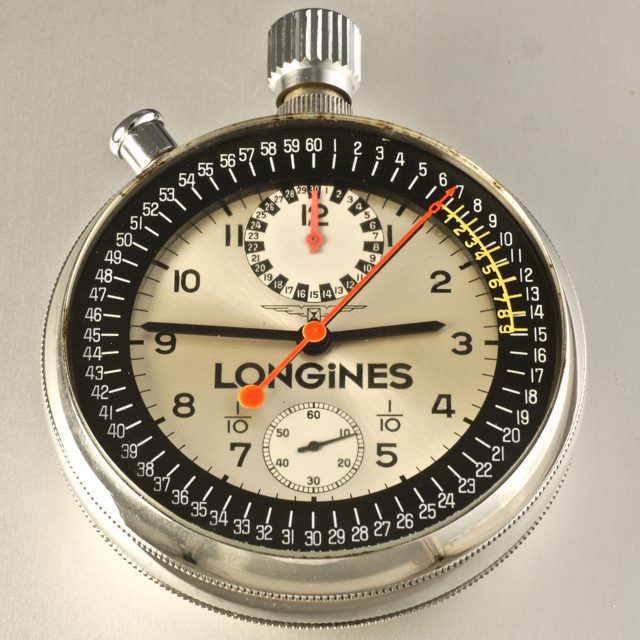
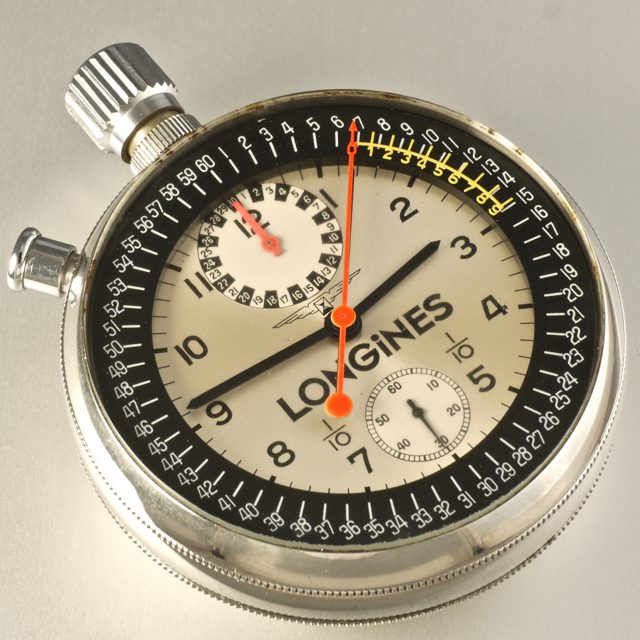
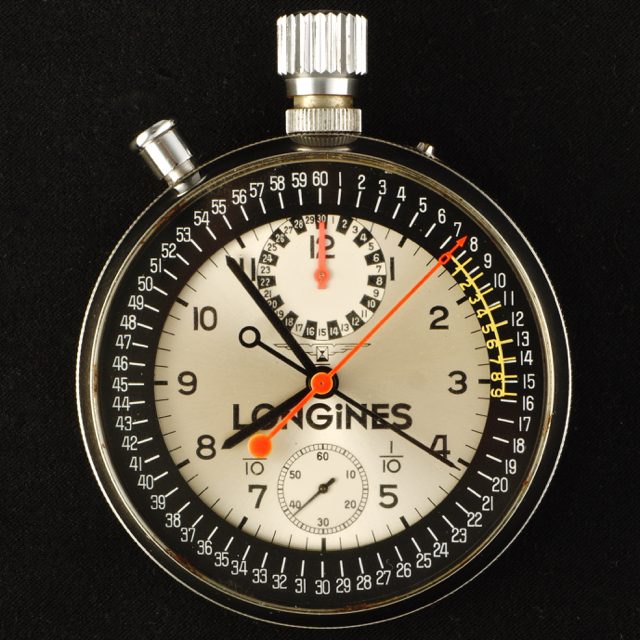
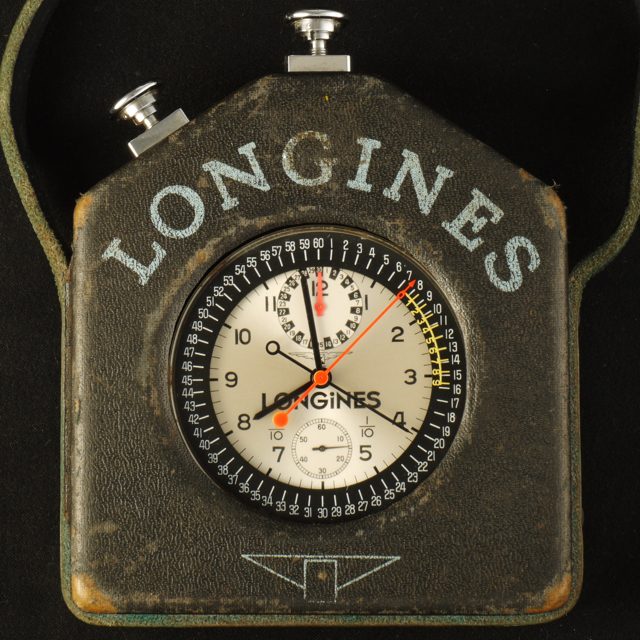
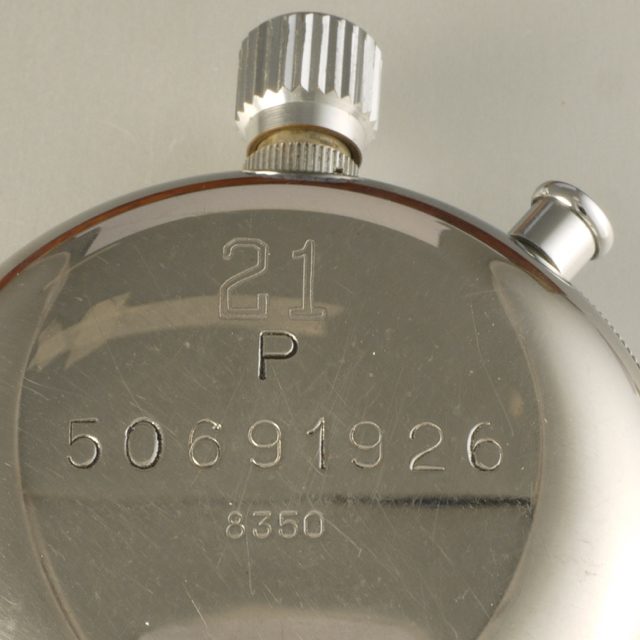
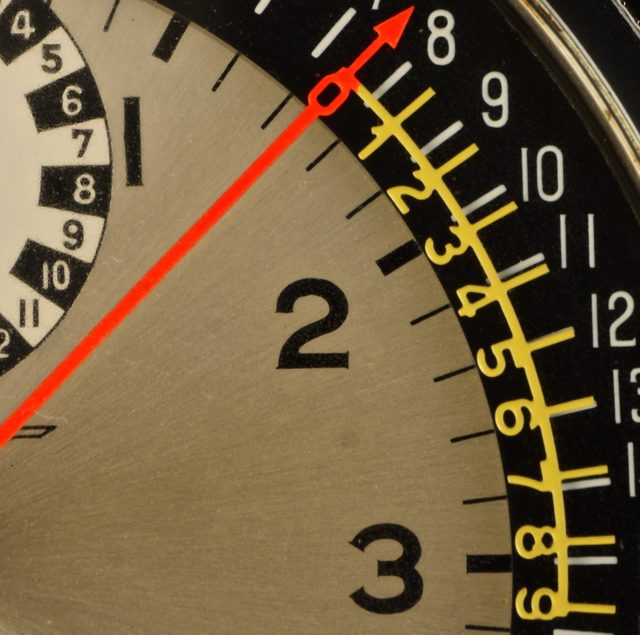
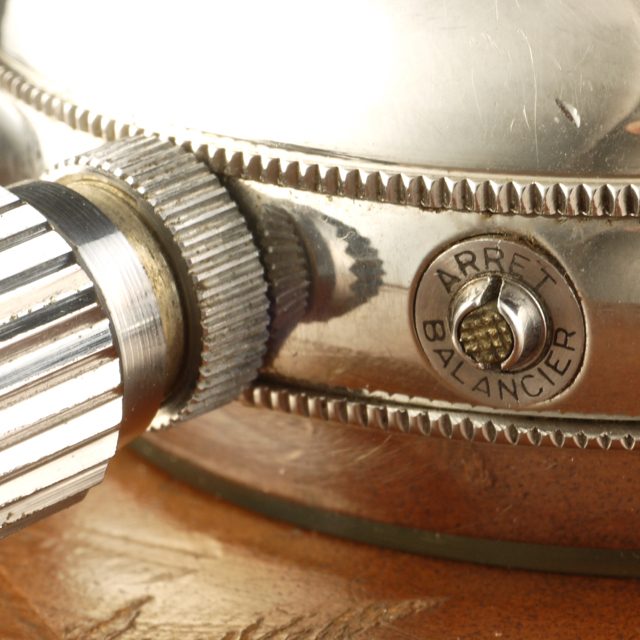
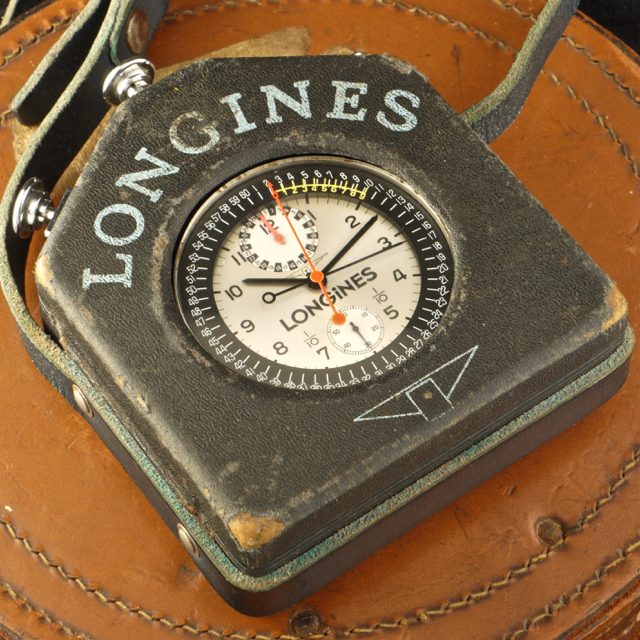
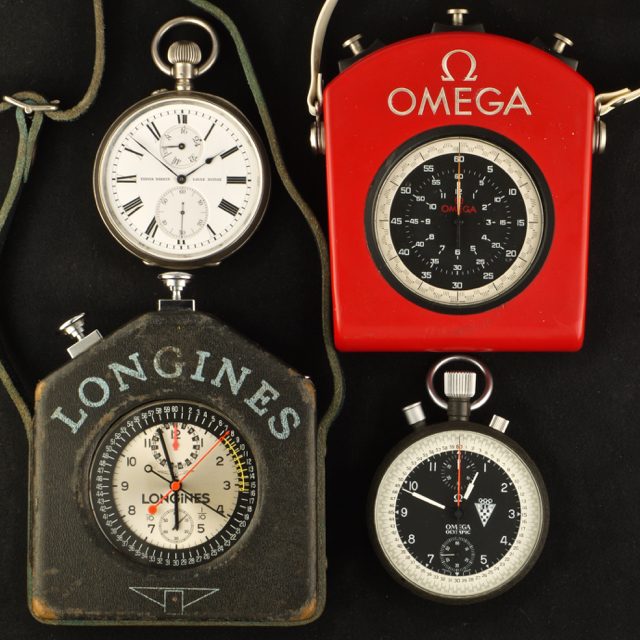
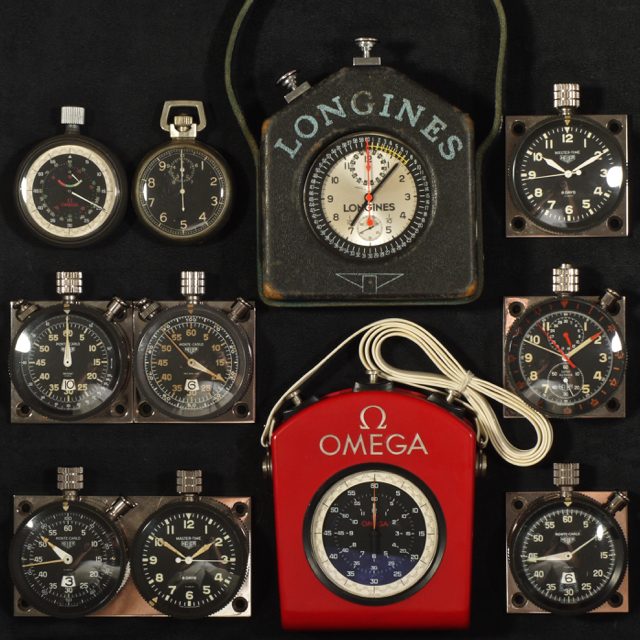
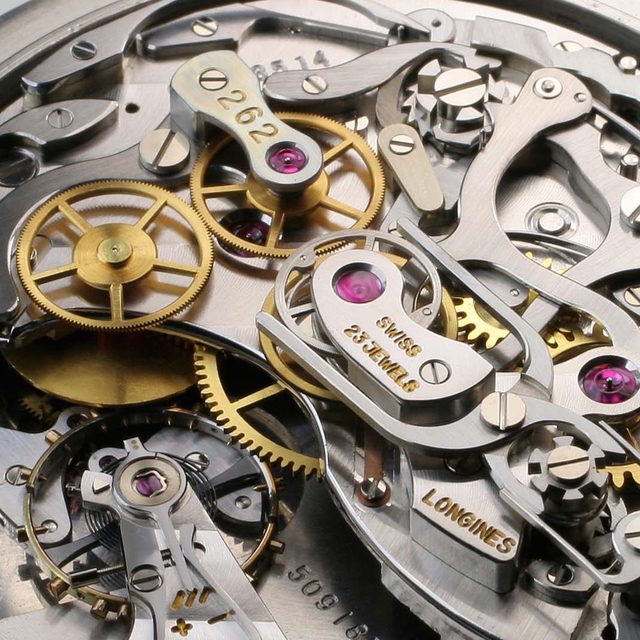
Longines 1/10 split-second Chronograph
MIT biochemist Har Khorana finishes deciphering the DNA code1966 Longines Chronograph Stop watch with 1/10 scale caliper also known as the official 1968 Mexico Olympics Games Chronograph.
This Longines was a pinnacle instrument. Sent to the Swiss Observatory at Neuchatel for timing and kept by the factory, they where used for all types of important events from Olympic games to the timing of Donald Campbell’s Bluebird water and land speed record attempts.
Developed from the early cal. 24 from 1939, modified to 260 in 1957 and finally to 262 in 1966 with hours, minutes, seconds & 1/10 second split-second chronograph with 30 minutes counter.
Longines was one of the leading manufacturers in the world. And I say manufacturer because while even Patek, Vacheron, and AP were using outsourced movements, Longines was indeed one of the few companies manufacturing its own in-house chronograph movements.
Longines was founded in 1832, its winged hourglass logo is the oldest registered trademark for a watchmaker.
Longines provided timers used at the first modern Olympics in 1896.
In 1899, a Longines watch went to the North Pole with the Arctic explorer Luigi Amedeo of Savoy.
Charles Lindbergh, after his transatlantic flight, designed a pilot watch to help with air navigation. Built to his specifications, the Longines hour angle was introduced in 1931 and it is still produced today.
The company began to produce military issue watches for the second World War, most for the European forces.
Today Longines is owned by the Swatch Group.
